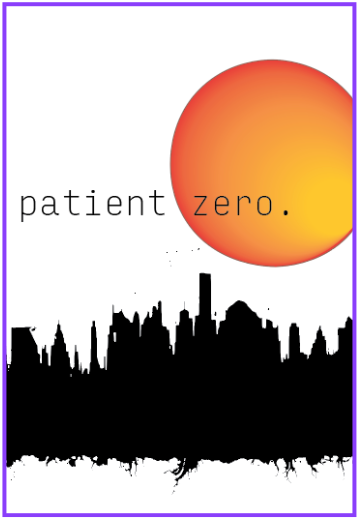Inception:
We began our brainstorming by discussing some of our favorite games that did not necessarily require boards, dice, or cards. We both shared a love for Mafia and other games that rely on suspicion and distrust to drive player’s motivation. Kay shared her ideas for an infection-based game, rather than the murder plots that drive Mafia. From this “Patient Zero” was born! We began by creating roles for players to assume. When considering the advice from class, of picking a theme or a mechanic and beginning from there, we found that we easily matched one to the other.
Then we moved to gameplay and determined that Patient Zero’s goal would be to infect as many players as possible and ultimately take out the Doctor (who may be renamed Scientist for our final version). Meanwhile the “good” side would be trying to contain the spread of infection and scavenging for ingredients to develop a cure. Once Patient Zero was cured “good” would prevail! Kay and I attempted mini playtesting throughout our process. Taking a break from creating event cards to run though hypothetical scenarios that our players might encounter. But our goal was to create a full beta version of our game to play with others. The number of people we could playtest with became critical to our game as we realized the roles we had developed would require at least 5 players. So we set out to create many event cards, action cards, and disruption cards.
Then we playtested with Kay’s friends! Playtesting on this scale was huge for our project. We kept a stopwatch running the whole time so we could keep track of how long gameplay actually took and how long we would allow for deliberation whenever a card called for a decision. As we played we incorporated feedback from the players and made a few tweaks such as giving all the ingredient cards to the Sheriff (sort of a game master) and expanding the duties of the Scavenger to all players. Then we took notes of all other feedback that we could incorporate after our gameplay but before our class presentation. The main issue was the length of gameplay and that some of our cards had minimal consequences for players. We have updated all cards to have immediate consequences.
Where we are now!
Players each draw a role card and act as their assigned identity. Every role remains a secret, minus the Sheriff who controls the flow of the game and collects the three ingredient cards and two nurse cards and then acts as the “bank”. Then all other cards are shuffled by the Sheriff and placed in the middle. The player to the right of the Sheriff kicks off the game by drawing a card. Subsequent gameplay is dictated by the cards and the outcomes of the challenges the player must complete.
